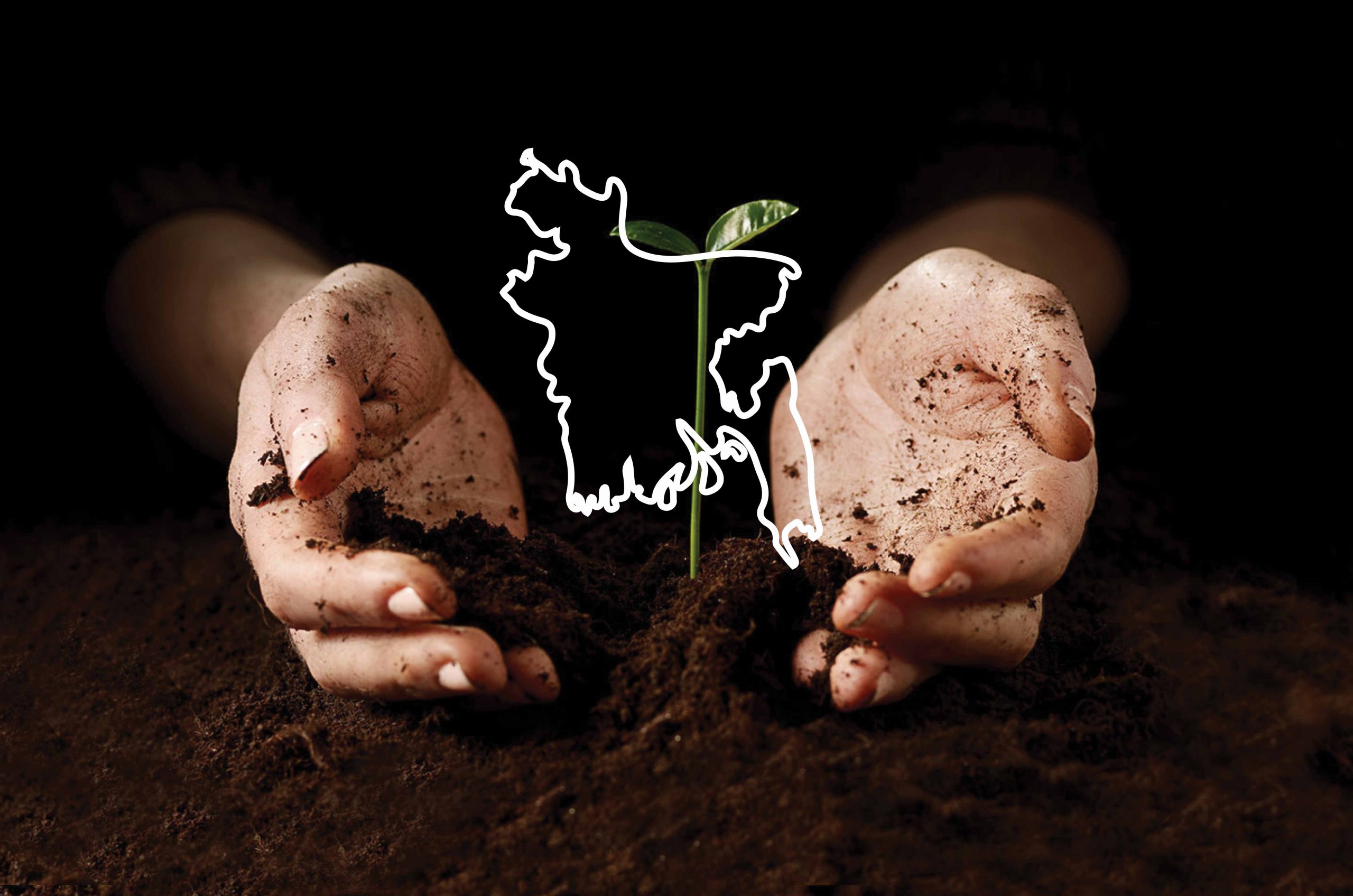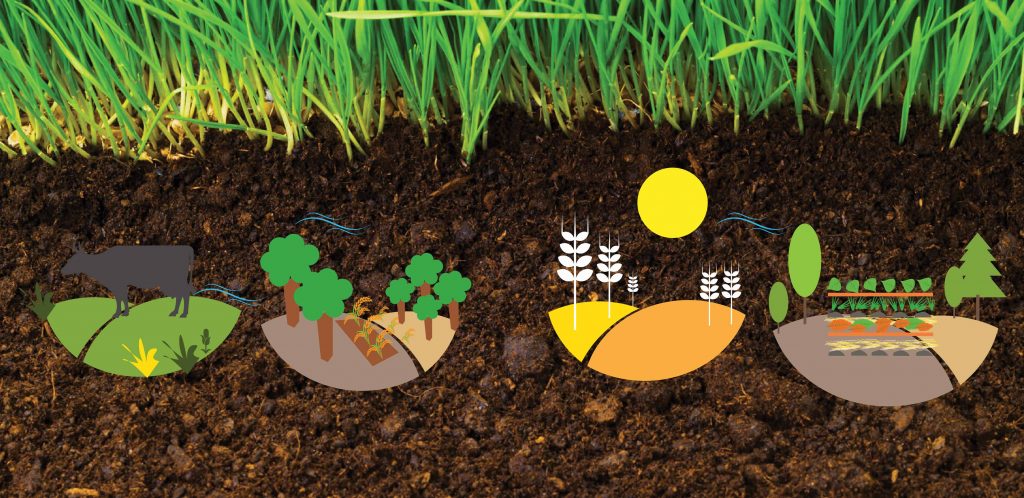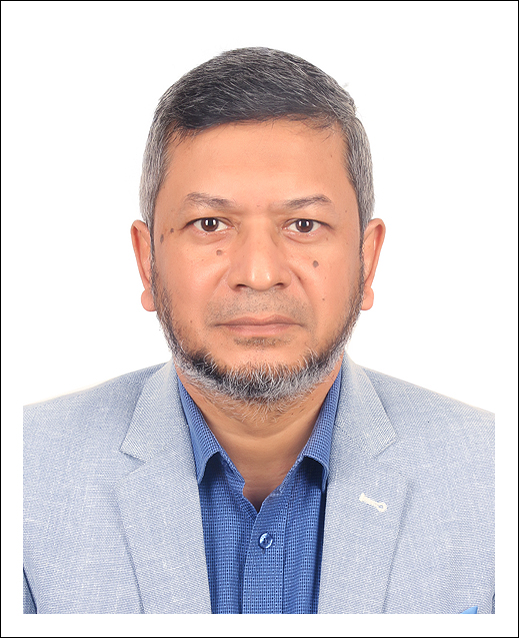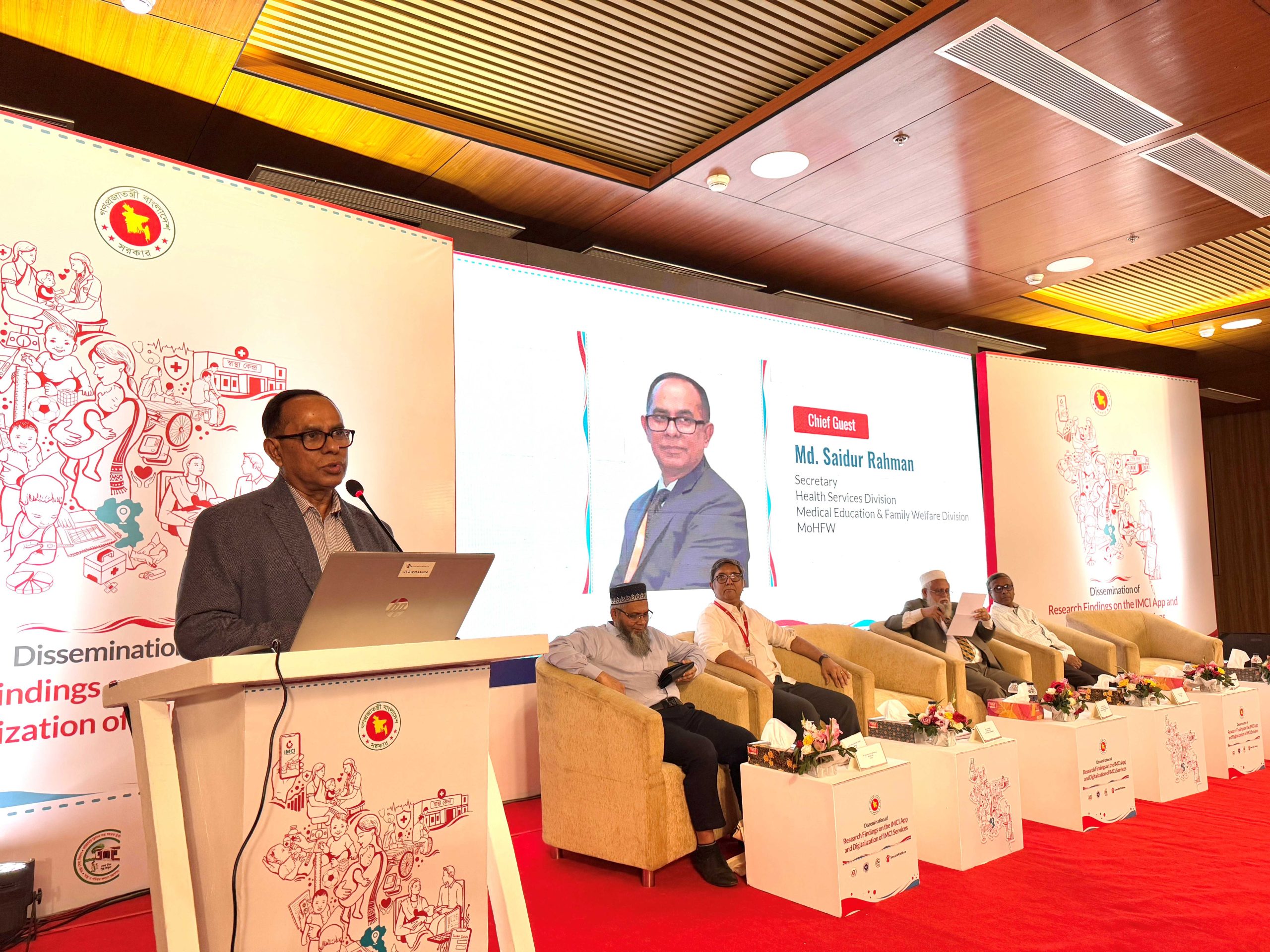Bangladesh is little more than a dot when it comes to the space it takes up on the globe, but if one looks beyond the size and into population figures, the country happens to be the eighth biggest in the world. With over 170 million people already, and counting, Bangladesh is quite overburdened when it comes to the utilization of its resources.
Considering that land is a non-renewable resource, it is even more important to be mindful of how one uses the most important element of it – the soil. Soil is one of the most complex, as well as the most dynamic systems, crucial for all living things in an ecosystem. Soil conservation is important for the world because the survival of humans and all creatures living on land largely depends on the bounties of the soil.
Sadly, due to a lack of awareness or otherwise, the rise in world population is leading to higher food demand while incorrect agricultural practices and a gross lack of proper soil governance are causing soil degradation at an alarming rate. Unsustainable land use and unplanned land conversions add to the plight of this non-renewable resource.
The United Nations Convention to Combat Desertification (UNCCD, 1994), defined land degradation as “the loss or reduction of the biological as well as economic productivity and complexity of irrigated or rainfed cropland, or pasture, range, woodlands, and forests that result from the land uses or from a single or combined process, including those arising from human activities.” In 2012, it called for adopting urgent measures to reverse land degradation and introduced land degradation neutrality (LDN). In layman’s terms, LDN is a state where land quality and the amount of land resources that are required to ensure food security and enable terrestrial ecosystems to flourish remain stable or increase.
Bangladesh too is facing imminent land degradation threats and has been doing so since the 1980s. Despite receiving almost 2200mm of rainfall each year, the northern part of the country battles desertification. Instances of drought have increased, primarily thanks to the assaults on the Sundarbans and Madhupur forest. The southern side of the country has its own issues of growing salinisation which results in reduced soil fertility. The growing population of the country is an open secret, which not only means more demands for food but also more land on which to live. Cultivable land decreases each year and the country loses land amounting to 82,000 hectares per year, simply due to soil conversion.
Soil degradation comes in a number of forms, and the major ones affecting Bangladesh are soil fertility and organic matter depletion, water erosion that affects 25% of the country’s land, riverbank erosion, waterlogging, salinisation, acidification, compaction or pan formation, desertification in the northern part, soil pollution, and unplanned industrial development. The districts most vulnerable in terms of soil degradation are Rajshahi, Pabna, Kushtia, southern Dinajpur, northwestern Jessore, and western Bogra. These areas are especially vulnerable due to human intervention, deforestation, and their dense population.
DESPITE RECEIVING ALMOST 2200MM OF RAINFALL EACH YEAR, THE NORTHERN PART OF THE COUNTRY BATTLES DESERTIFICATION. INSTANCES OF DROUGHT HAVE INCREASED, PRIMARILY THANKS TO THE ASSAULTS ON THE SUNDARBANS AND MADHUPUR FOREST.
For a country that depends on its agricultural industry more than anything else, overuse, or abuse of its natural resources such as land, forests and water bodies can lead to grave consequences. Recognising the challenges gripping the nation in order to meet the ever-growing food demands of the country, the Government of Bangladesh decided to comply with the UNCCD programme and set six voluntary LDN targets in 2015, targeted to be achieved by 2030. These include improving soil carbon stock and fertility in 2000 sq. km of cropland area, reducing land cover/use conversion in 600 sq. km of forested area, reducing waterlogging issues in 600 sq. km, reducing soil erosion in hilly regions in 600 sq. km area, protecting non-saline regions from salinity intrusion in 1200 sq. km coastal area, and reducing riverbank erosion at 100 hectares/year covering an area of 100 sq. km.
Bangladesh’s population is 170 million strong, demanding about 38 million tonnes of food grain per year. The responsibility to feed all these citizens is something of a tall order for a country that lacks adequate farming space. The staggering number also needs to squeeze itself into an area of just 65000 sq. km of land area. As a result, farmers are left with no choice but to clear forestland for growing crops, overuse land as much as possible instead of allowing it the rest it naturally needs to recuperate after each harvest and try to squeeze out every last bit of fertility of whatever cultivable land they can get their hands on, through the use of harmful chemicals and fertilisers. These harsh methods have thus far kept the burgeoning population fed but leave land exhausted, undernourished and degraded.
Studies show that farmers of the country had used 365,881 tonnes of urea (nitrogen) in 1980-81, a number that sharply rose to 1,183,024 tons in 2015-16. Using added chemical fertilisers and pesticides has been known to cause other problems too, such as reducing and destroying soil fauna, responsible for aerating the soil. Needless to say, the soil of Bangladesh has had to bear the brunt of it, in the form of runoff, consequent flooding and landslides. Regrettably, the country is expected to need around 3.4 million tonnes of urea fertiliser in 2022-2023, 2.4 million tonnes of diammonium phosphate (DAP) and triple superphosphate (TSP), and 1 million tonnes of muriate of potash (MOP), respectively, in the coming years, which will doubtlessly exacerbate the problem further.
As a result of the overuse of almost every kind of nutrient, from nitrogen to potassium and phosphorous, the soil of Bangladesh has also been losing beneficial microorganisms rapidly. This means that plants are unable to receive the required amount of nutrients from the soil. Sadly, now, despite the use of supplementary fertilisers, some crops simply refuse to grow.
According to reports from the Soil Resource Development Institute (SRDI), good quality soil must have 2.5% of organic matter. The soil in Bangladesh contains less than 1.5%, meaning that the arable soil in the country is severely deficient in nutrients. It is further stated that the overall nitrogen balance of the soil is negative, potassium balance is highly negative, phosphorous balance is almost nil and similar off-balance situations exist for sulphur, zinc, boron, other organic matter and pH levels.
If this has seemed like a bleak read so far, the next bit might bolster the spirits some. Land degradation is not completely irreversible. Food and Agricultural Organisation (FAO) projects in Peru, in collaboration with a technical group from the Netherlands, have produced satisfying results. A model project was set up in Niger, back in the late 80s, in an effort to revive 5000 sq. km of pastures. The land in question was irrevocably damaged by too much flooding and overgrazing of animals.
Efforts included building anti-erosion dams to lower instances of run-off, and planned planting of trees to prevent the force of wind and to absorb river water during floods. Within a few years, about 2000 sq. km of land was reclaimed and wildlife had returned. Crops had begun to produce more yield and the economy of the place was just about revived.
SOIL DEGRADATION COMES IN A NUMBER OF FORMS, AND THE MAJOR ONES AFFECTING BANGLADESH ARE SOIL FERTILITY AND ORGANIC MATTER DEPLETION, WATER EROSION THAT AFFECTS 25% OF THE COUNTRY’S LAND, RIVERBANK EROSION, WATERLOGGING, SALINISATION, ACIDIFICATION, COMPACTION OR PAN FORMATION, DESERTIFICATION IN THE NORTHERN PART, SOIL POLLUTION, AND UNPLANNED INDUSTRIAL DEVELOPMENT.
The fact that Bangladesh already uses 30,000 tonnes of locally produced organic fertiliser, and demand for the compost is growing by about 30% annually, is encouraging. Local entrepreneurs are using cow and chicken excreta to produce compost, according to F.H. Ansarey, Managing Director and CEO of ACI Agribusinesses. Vermicompost, another alternative for Bangladeshi farmers is a mixture produced from earthworms and fruit and vegetable waste. The natural fertiliser cum pesticide helps increase soil fertility and increases the plant’s natural resistance to harmful pests. The organic matter, replacing chemicals in natural fertilisers keeps soil rich and fertile for a long time.
The results of the LDN target achievement goals, however, have produced dismaying results. Cropland continues to diminish and chemical levels in the soil have increased in the 2000s. Forest land too has suffered at the hands of locals and refugees and the country has equally poor results to show for its soil erosion in hilly areas and waterlogging targets, both of which are suffering from a common problem in recent years due to detrimental practices such as hill cutting and deforestation. CEGIS assessed river bank erosion levels in the country and predicted a possibility of soil loss upwards of 3426 hectares in 2021 and onwards. According to the Bangladesh Ministry of Environment and Forests (2015), approximately USD 3 billion is needed to “prevent salinity intrusion and protect coastal area” and USD 8 billion to “ensure food security, livelihood, and health protection” between 2015 and 2030.
In the midst of all this, Bangladesh has managed to pull up its crop production and crop intensity numbers between the 1980s to the early 2000s. Levels of organic matter have also increased from low to medium during the same time period.
This shows that the soil still has the potential to change but efforts to lower land degradation need to include more than just the adoption of natural fertilisers and pesticides. The government of the country must pay more attention towards its fast-growing population, which threatens more and more cropland each year, and stricter regulations must be put in place, discouraging the cutting down of the country’s hills and forestlands. The apparent food deficit may have been covered up so far with import efforts, but with the ongoing war in Europe and the global inflation raising food prices, the extent of the problem will soon be evident to the citizens of the nation. In this sense, being one-dimensional in its focus can bode a number of food security and human life security issues for the country, not too far in the future.
















